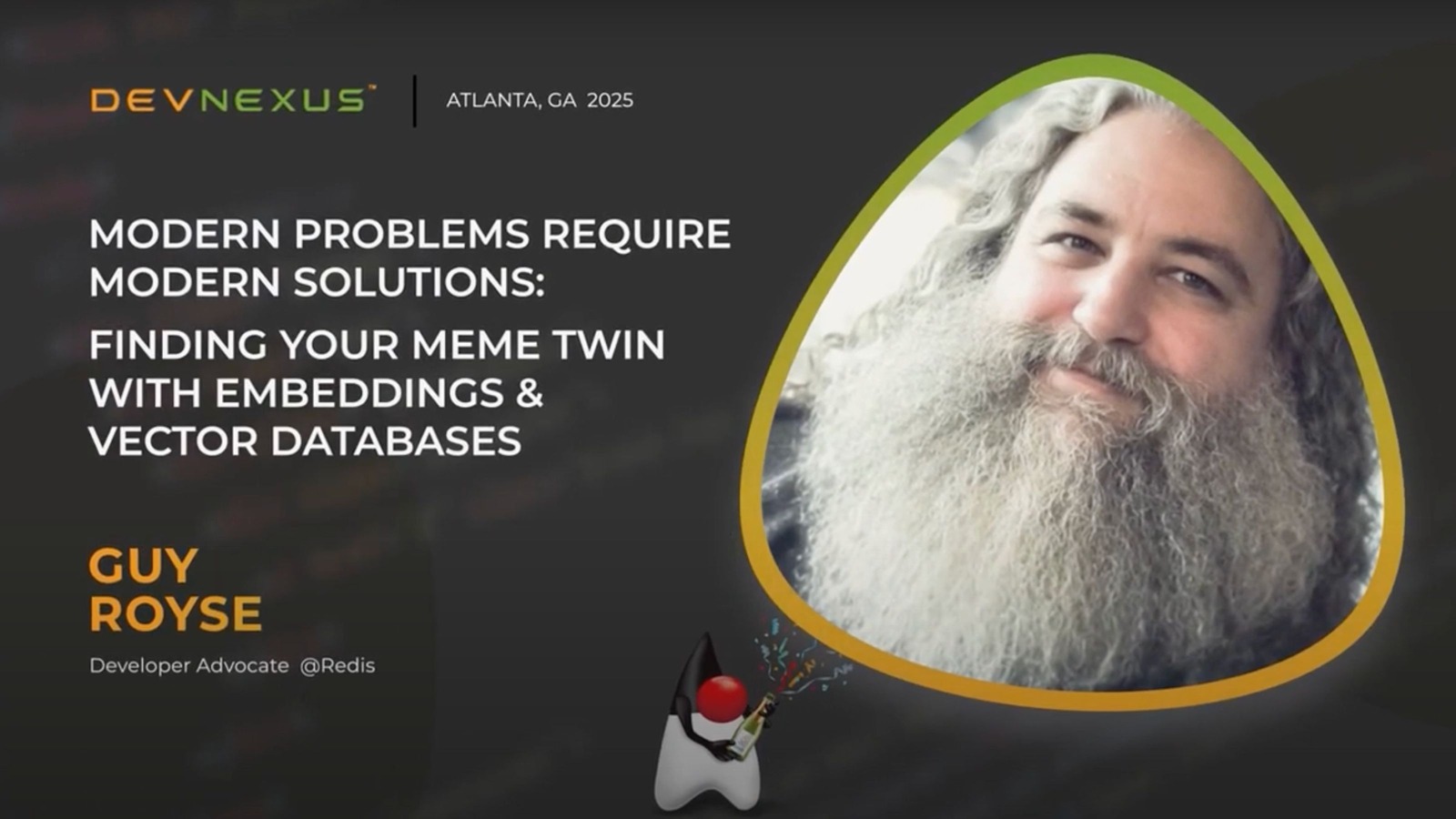Modern Problems Require Modern Solutions , Finding Your Meme Twin with Embeddings and Vector Databases, with Guy Royse

The modern developer faces a growing challenge: making sense of the world’s fastest-expanding resource—unstructured data. In his Devnexus 2025 talk, Guy Royse, Developer Advocate at Redis, explored how to transform seemingly unsearchable content—like images, audio, and documents—into quantifiable, comparable data. The cornerstone of this process is the embedding, where an AI model converts the meaning of an asset into a vector, or a “pile of numbers.” These vectors serve as coordinates in a high-dimensional space, allowing similar items to cluster together. Royse demonstrates how features are extracted and scored (e.g., how “alcoholic” or “elderly” a person in an image appears), enabling developers to measure similarity simply by calculating the distance between vectors.
Once data is vectorized, a vector database—like Redis—can store and index these embeddings for lightning-fast similarity searches. Royse highlights two primary methods for comparison: Euclidean distance, which measures straight-line distance between points, and Cosine similarity, which assesses the angle between vectors. Key applications include Semantic Search, which finds results based on meaning rather than keywords (e.g., searching for “fast food” and returning a document mentioning “McDonald’s”), and Semantic Caching, which detects if a new user query is semantically similar to a previous one to serve cached responses, reducing expensive LLM API calls. This implements a “cache-aside” pattern using vector search.
Royse emphasizes that these tools are accessible to developers without data science expertise. He demonstrates the “Meme Twin” project using JavaScript (Node.js) and Hugging Face image embedding models, running locally on standard hardware. While understanding concepts like Convolutional Neural Networks (CNNs) is useful for debugging, he cautions against building your own embeddings. Instead, developers should leverage pre-trained models from platforms like Hugging Face, combining them with vector databases to enable semantic search, caching, and Retrieval Augmented Generation (RAG) efficiently and cost-effectively.
Royse’s talk highlights that modern AI-powered features no longer require a specialized data science team. By combining pre-trained embeddings with vector databases, developers can build semantic search, caching, and intelligent retrieval capabilities into their applications—making previously complex functionality accessible and practical for real-world projects.
Join Us at Devnexus 2026
Insights like these are just a snapshot of what Devnexus offers. Join us next year to discover the latest tools, frameworks, and ideas shaping the future of development—and connect with a vibrant community of peers.
👉 Learn more at devnexus.com




